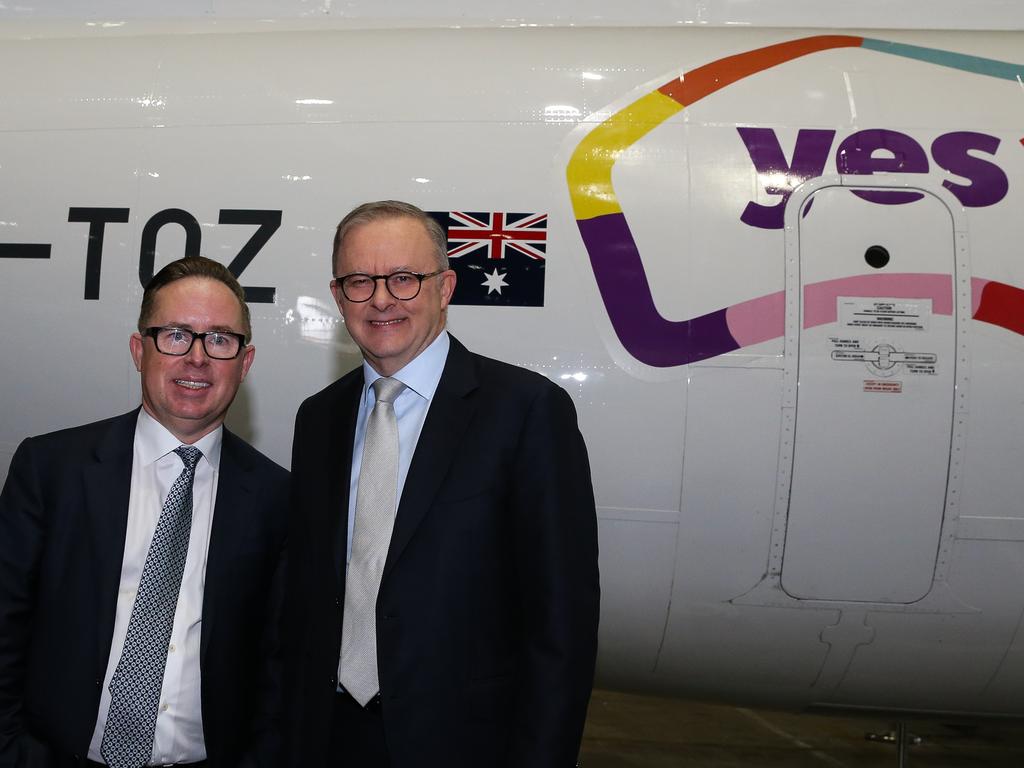Failed voice referendum shines light on division

But in Australia, it took a race-based referendum to understand just how deep the community division has become.
Neither the prime minister nor business leaders understood the depth of the national division.
Business leaders, PMs and/or their older children often live in the pockets of Australia that are totally different to the rest of the nation.
Anthony Albanese represents the Sydney seat of Grayndler, where voters are disproportionately concerned with indigenous affairs, racism and the environment than the rest of Australia, which is far more concerned with economics and practical situations.
There was a 75 per cent Yes vote in Grayndler. Albanese did not understand that his electorate is very different to the rest of the nation, where most ALP voters live.
Many CEOs of large enterprises live in similar communities to Albanese, and their disastrous allocation of shareholder cash to the Yes campaign may have partly reflected the attitudes of people they meet in the supermarket.
CEOs marketing to the nation can therefore push the wrong strategy buttons.

By contrast, Peter Dutton represents the Brisbane seat of Dickson, which is much more like the rest of the nation and recorded a 70 per cent No vote.
Very few CEOs live in Dickson, although non-Brisbane CEOs pass the vicinity as they drive from the Brisbane airport.
I obtained the world comparison and the Albanese/Grayndler insight from a remarkable opinion poll produced three days before the referendum by the UK-based Focaldata group, who correctly forecasted the No vote would reach at least 61 per cent of the electorate and could go higher.
All the Australian-based pollsters predicted a strong No victory, but few predicted the vote would exceed 60 per cent. Accordingly, I want to share with you some of Focaldata’s conclusions, which proved stunningly accurate.
The chief research officer of Focaldata, James Kanagasooriam, concluded that the Yes campaign’s celebrity endorsements and corporate sponsors gave the Yes campaign a “feel” similar to the Hillary Clinton US Presidential campaign in 2016 and the “Remain in the EU” campaign also in 2016. Both also failed.
The Focaldata poll confirmed the structural attitude split in the Labor Party between its older, rural and traditionalist voters and its younger, urban, university-educated base.
Focaldata says this pattern of votes could have been lifted straight from the UK’s EU referendum – with the Yes campaign doing materially worse in the polls.
Australian politics now looks a lot like the US and UK realignment.
While as in the UK, Australia’s Yes supporters have a high number of young people; the 35-44 to age group in Australia remains firmly in the economic and practical issue group voting No.
In the UK, that age group is dominated by Yes voters.
But among most Australians, indigenous affairs rank low in importance, so the Australian realignment may be slower, and the Liberal leader (read Conservative for UK readers) may not be the person to transfer the change into gains for his party.
On the other hand, Focaldata say that almost no ALP style centre-left party in the English-speaking world would hold the Queensland and WA types of rural voters.
The ALP forgot how far apart its rural voters in Queensland and WA were from NSW and Victorian voters.
The Yes side were relying on partisanship kicking in on the Labor side, but that strategy ran up against the global demographic and attitudinal trends now seen in Australia.
Focaldata also concluded that the voice was a hard-to-understand concept and even after months of campaigning, a significant proportion of Australians didn’t really understand it.
And even when they did understand, they were told simultaneously that it was both an important and modest change.
Focaldata concluded the Yes side had only one cogent argument to achieve victory – that it will improve the lives of Indigenous Australians.
The No side deployed three separate arguments that only partially overlapped and therefore offered a much wider electoral coverage: now is not the time for a referendum due to the cost of living crisis; the voice undermines the principle of equality; and more controversially, the concept of ‘First Australians’ is itself flawed.
I would add that the No campaign also focused on the fact that there were no details provided by the Yes campaign.
But if Yes provided the details, they would be forced to reveal that the voice representation on almost any matter to the public service (separate from the parliament) had the power to completely clog government.
That revelation would have caused even more Yes voters to be attracted to No.
In simple terms, Yes was a bad product and no amount of corporate shareholders money could overcome its deficiencies.





The societal split that emerged in the referendum duplicates what is happening in the UK, the US and other western democracies.